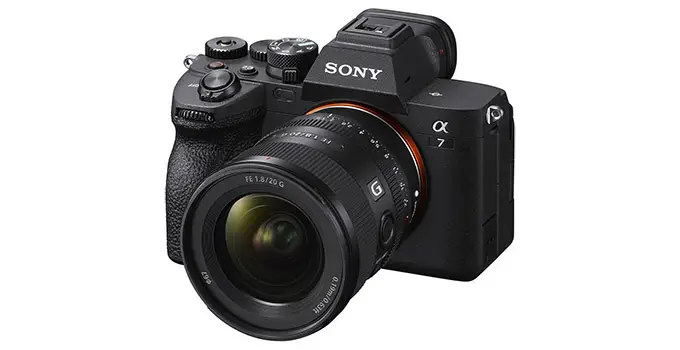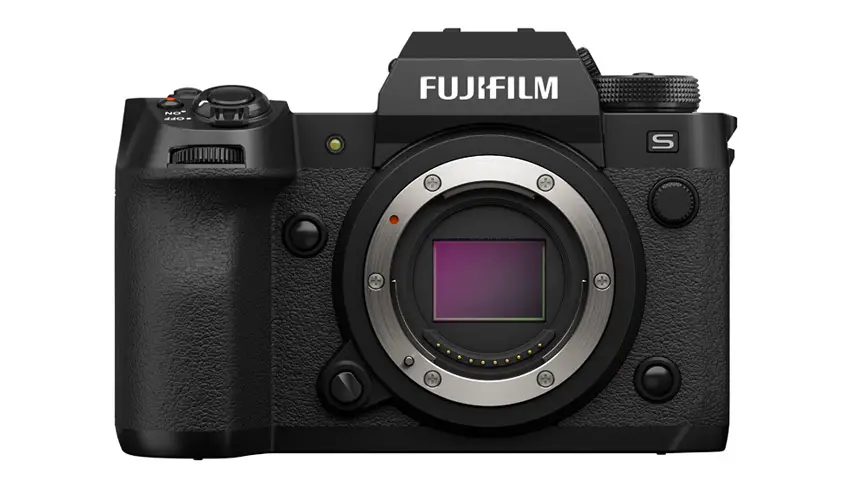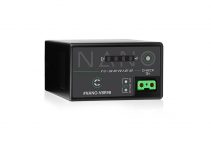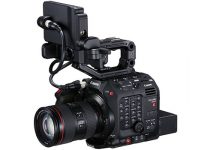Among the past year’s biggest releases was the Fujifilm X-H2S. This is a huge improvement over its predecessor, especially for video shooters. Fujifilm definitely caught up in terms of specs with the competition and it is a very compelling option for video and photos.
It is still an APS-C camera and a lot of people are considering format when picking up a camera. So, how does it compare to the similarly priced Sony a7 IV, one of the most popular hybrid cameras around.
It looks like The Hybrid Shooter was interested in checking this out as well since they created a side-by-side comparison with these two models.
Body Style and Build Quality
Even though the sensors are very different the bodies are very similar in size. Fujifilm is actually a little wider, but not something too noticeable. The weight is even within just 2 grams. Both are small and lightweight.
As for build they both have durable magnesium alloy frames. If anyone has the edge it is the X-H2S since it has a rubberized wrap for a better grip.
Sensor Differences
Obviously, the biggest difference you’ll see in the image is due to the different sensor technology. Sony uses a full-frame 33MP back-illuminated sensor while the Fujifilm uses an APS-C 26MP stacked sensor.
The a7 IV captures a little more detail thanks to the higher resolution and larger pixels though unless you are zooming in on a high-res screen you might not see a huge difference. If you do plan to crop then Sony might be better.

Image Credit: Sony
Low-Light Performance
When working with ISO tests there was a discrepancy in the brightness of the final image. At the same exact settings the X-H2S was a bit darker. This meant that in the tests they would bump the Fujifilm up 2/3 stop to make the image appear the same. Sony is cleaner by about 1.1 stop.
At the base testing ISO of 1600 for Sony and 2500 for Fujifilm you could see a very clean image from the a7 IV and a bit of noise from the X-H2S. Both were perfectly usable.
Moving up a stop to 3200/5000 both were usable, but Fujifilm would struggle in cases where you need fine detail or are publishing high-resolution copies. Going up another stop the Sony is at the edge of usability while Fujifilm isn’t quite there. Above that is generally better for emergencies or documentary.
Dynamic Range
Thanks to a better signal-to-noise ratio and the larger sensor/pixels the a7 IV is delivering a touch more dynamic range. In editing they were able to freely adjust the shadows and highlights without losing detail or destroying the image. Fujifilm was also very good, though with a little bit less flexibility.
Colors are similar, though there isn’t an advantage one way or the other for standard shooting. The X-H2S does have the super popular Film Simulations, however.
Shooting Speed
This is not even a contest. Sony has been stuck with a 10 fps continuous mode for a few generations. Fujifilm made a huge improvement here with a 40 fps burst shooting option. If you need to capture action the X-H2S is spectacular.
Both do have decent buffering performance. Sony basically doesn’t have a limit as long as you use fast CFexpress Type A cards. Fujifilm has unlimited shooting up to 20 fps, though at 40 fps you will find it slows down after a bit.
Autofocus
Both cameras do great with autofocus performance. This includes static subjects with big movements as well as tracking moving subjects. You will need to make sure your settings are optimized for your subject with the X-H2S though the a7 IV seemed to nail it right away.
In video they give Sony the win since it is a bit faster and more reliable. Fujifilm isn’t bad, it just isn’t quite as good.
Video
This is a big area for differences. Sony can record downsampled UHD 4K up to 30p in full-frame or up to 60p with a 1.5x crop. Fujifilm can get up to 4K 60p without issue and even has access to DCI 4K resolution and 120p with a 1.29x crop. Plus, it has an open gate 3:2 aspect 6K recording mode for grabbing all the data off the sensor.

Image Credit: FujiFilm
This isn’t generally a case of one being better than the other, more so just them providing different options. Fujifilm does have more options and variety in its settings and capabilities that seem to make it a more complete package. It’ll even record in ProRes natively and has lower rolling shutter.
Stabilization
For the in-body stabilization systems the Fujifilm has the edge on paper, likely due to having a smaller sensor to shift. However, in testing, it doesn’t seem like it has that strong of a lead in real-world use. The Sony a7 IV’s system is underrated. Both are very good for static shooting and smaller moves.
Digital stabilization is available in both and these do seem to improve performance if you need it.
Handling and Controls
Both cameras have decent grips and there are no complaints here. The a7 IV does have a couple extra command dials for tactile controls. Both seem to have fairly decent button layouts as well. Fujifilm does offer more custom modes on the mode dial and there is a top LCD for a quick preview of settings.
As for the menu UIs, he does prefer the Sony system. It has been cleaned up a ton over the many generations and now offers touch control. Fujifilm isn’t quite there and doesn’t have touch functionality.
Display
One area where Sony hasn’t made much progress is with the rear display. It’s not nearly as good as the X-H2S which is a higher resolution. Fujifilm also takes the cake with the EVF being much clearer at 5.76m-dot compared to the Sony’s 3.69m-dot.
Battery Life
Despite very different mechanics both cameras are rated for around 580 shots per battery. In real-world testing it did seem like the Sony was a touch more efficient. Both are very good and capable of much more than the rated number.
Lens Selection
Sony has a clear advantage in lens selection. Not only has the company built up a huge collection of first-party lenses they are very well supported by third-party manufacturers. Fujifilm is decent, though a lot of the core lenses are getting a bit old. New lenses are very, very good though and third-party companies are finally starting to come out.
Final Thoughts
The real question isn’t which one is better it is trying to find which one is best for you. The main question is whether you love that full-frame look and quality or want the more feature-rich APS-C camera.
They are coming in at similar price points so you will definitely want to check out the whole system, including lenses, before you lock in.
Both are going to be very popular. Which would you pick?
[source: The Hybrid Shooter]
Order Links:
Disclaimer: As an Amazon Associate partner and participant in B&H and Adorama Affiliate programmes, we earn a small comission from each purchase made through the affiliate links listed above at no additional cost to you.
Claim your copy of DAVINCI RESOLVE - SIMPLIFIED COURSE. Get Instant Access!





